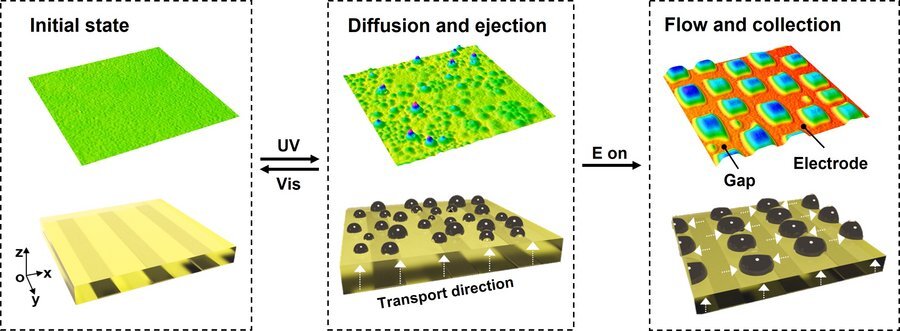Phys.org July 27, 2022
Following their previous work on artificial sweating skin an international team of researchers (the Netherlands, Italy) demonstrated three-dimensionally steered dynamic liquid mobility at nanoporous liquid crystal polymer coatings. The release of fluid is stimulated by UV light. Upon a primary flood exposure to UV light, liquid is ejected globally over the entire coating surfaces. They reallocated the secreted liquid by applying a secondary electric field stimulus. By doing so, the liquid is transported and collected at pre-set positions as determined by the electrode positions. They monitored the process in real-time. Through precise analysis they found that when applying the two triggers, UV light and electric field, simultaneously there was a UV-gated liquid-release effect, which decreased threshold voltage as well as threshold frequency. An evenly sweating artificial skin can help cool the surface of robots. In social applications, it could help make the robot as human-like as possible, which includes sweating, special bandages that can deliver controlled drugs to human skin or to a wound surface such as a burn…read more. Open Access TECHNICAL ARTICLE

Schematic representation of the secretion of liquid by the artificial skin with different external stimuli. Credit: Angewandte Chemie International Edition (2022), 5 July 2022